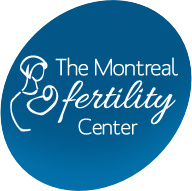In Vitro Fertilization (IVF)
Introduction to IVF
In vitro fertilization (IVF) is the most sophisticated form of infertility treatment and the treatment that gives the highest possibility of pregnancy in a given menstrual cycle.
IVF consists of ovarian stimulation, egg retrieval, fertilization of the egg(s) in the laboratory, culture of the embryos, and embryo transfer. In addition, it may include cryopreservation of the remaining viable embryos with vitrification, and/or laser-assisted hatching to facilitate implantation.
IVF is the treatment of choice for men with abnormal semen analyses, women with damaged fallopian tubes, women with advanced maternal age (≥ 38) or diminished ovarian reserve, women who have an endometrioma, and patients in whom other fertility treatments have failed.
Ovarian Stimulation
Ovarian stimulation is achieved with gonadotropins, e.g. follicle stimulating hormone (FSH) and luteinizing hormone (LH). In a natural menstrual cycle the pituitary gland releases just enough gonadotropin to support the growth of a single follicle (egg). However, in an IVF cycle we use gonadotropin injections to support the growth of multiple follicles (eggs).
Typically, you will be on gonadotropin injections for about 10 days before you are ready for your egg retrieval. The first several days of gonadotropin administration are usually free of symptoms. However, after about 7 days you may experience abdominal tenderness or bloating.
During the time your ovaries are being stimulated you will be closely monitored with ultrasound scans. At each ultrasound we document the size and number of follicles that you have, and we may make adjustments to your medications to optimize your stimulation.
Once enough follicles reach a certain size we will schedule your egg retrieval. Approximately 36 hours before your egg retrieval you will take a different injection to promote the maturation of your eggs. This final injection is critical to the success of your egg retrieval.
Egg Retrieval
Egg retrieval involves a transvaginal ultrasound probe with a needle guide. Using sterile technique the needle will pass through the vaginal wall directly into the ovary on each side. As each follicle is punctured, the fluid is drained and sent to the lab where it is examined under a microscope by an embryologist to identify each egg.
Egg retrieval may cause some discomfort. The night before the procedure you will be prescribed Ativan to help you rest and feel relaxed the morning of the procedure. You will be instructed not to eat or drink anything the day of the procedure, and to arrive at the Montreal Fertility Centre one hour prior to the egg retrieval. On your arrival a nurse will take your vital signs and start an intravenous (IV). In the procedure room the nurse will then give you medication to keep you calm and minimize discomfort.
Following the egg retrieval you will be monitored in the recovery room before returning home. Do not plan any other activities for the day of your egg retrieval. When you arrive home, relax and have an early night. It is not uncommon to have some abdominal discomfort and light vaginal bleeding post retrieval.
Fertilization
In classic IVF the sperm is prepared and mixed with the eggs. Alternatively, a single sperm may be injected into each mature egg using a technique called ICSI (Intracytoplasmic Sperm Insertion). ICSI is always done in cases of male factor infertility or cases with previous poor fertilization with classic IVF. Many couples also elect to do ICSI in order to reduce the chance of having mature eggs that do not fertilize. With classic IVF there is a 4-5% risk of total fertilization failure (no fertilized eggs), whereas with ICSI this is far less likely.
In either case, the sperm and eggs are left in an incubator overnight to allow fertilization to occur. The day following the egg retrieval you will know how many eggs have fertilized.
Embryo Transfer
Fresh embryo transfer will occur either 2, 3 or 5 days after the egg retrieval. The decision is based on the number and quality of embryos available. In general, when we have a large number of high quality embryos we grow the embryos to day 5, whereas when we have a more limited number of embryos we transfer them on day 2 or 3.
Embryo transfer is performed using a soft catheter under abdominal ultrasound guidance. This procedure usually takes only a few minutes, requires a relatively full bladder, and is not painful.
After Embryo Transfer
You should limit your activity for 24-48 hours after embryo transfer. Your activity can then be gradually increased over the next few days. Many women return to work after a few days if their jobs are not stressful, whereas others take this time off to rest.
Two weeks after your egg retrieval we will perform a pregnancy test. If your blood test is positive you will continue progesterone supplementation and a second blood test will be arranged 48-72 hours later. Based on the results an ultrasound scan may then be scheduled to confirm that the pregnancy is normal.
Laser Assisted Hatching
Assisted hatching is a process where the shell around the embryo, the zona pellucida, is weakened by a laser beam. This allows the embryo to exit its shell more easily, and may be recommended by our embryologists if they see that the shell around your embryos is very thick.
Cryopreservation Of Embryos
We use vitrification for freezing of embryos. We generally prefer to freeze high quality embryos either on day 3 or at the blastocyst stage on day 5. The vast majority of embryos (>90%) survive the freeze-thaw process, and the quality of frozen embryos is not affected by the length of time that they are kept frozen.
Frozen-Thaw Embryo Transfer (FET)
Frozen-thaw embryo transfer (FET) is a relatively simple treatment that typically involves taking estrogen supplementation for about two weeks. The uterine lining is closely monitored and when the lining is sufficiently thick we add progesterone and schedule the transfer.
